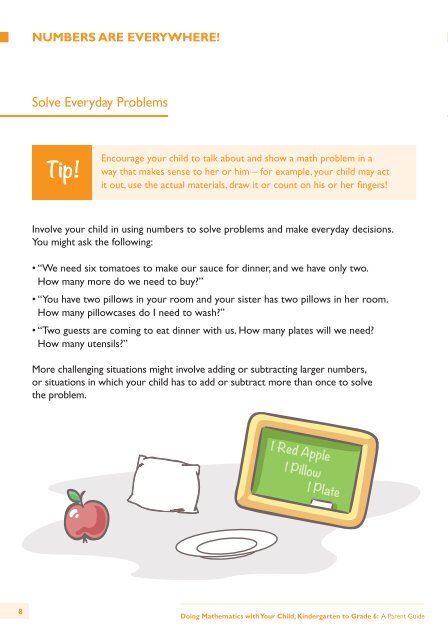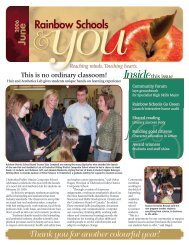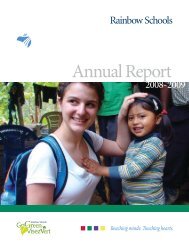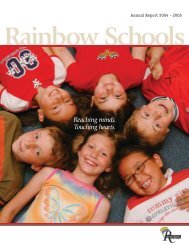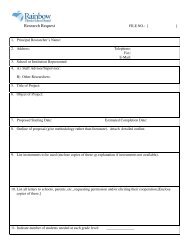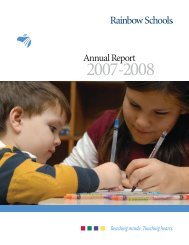Doing Mathematics with Your Child, Kindergarten to ... - EduGains
Doing Mathematics with Your Child, Kindergarten to ... - EduGains
Doing Mathematics with Your Child, Kindergarten to ... - EduGains
You also want an ePaper? Increase the reach of your titles
YUMPU automatically turns print PDFs into web optimized ePapers that Google loves.
Numbers are everywhere!<br />
Solve Everyday Problems<br />
Number Sense and Numeration<br />
Adding and Subtracting Made Fun<br />
<strong>Kindergarten</strong> <strong>to</strong> Grade 3<br />
Tip!<br />
Encourage your child <strong>to</strong> talk about and show a math problem in a<br />
way that makes sense <strong>to</strong> her or him – for example, your child may act<br />
it out, use the actual materials, draw it or count on his or her fingers!<br />
Benefits<br />
By playing these games, your child will learn there is no right way <strong>to</strong> add and<br />
subtract – mathematicians use a variety of strategies.<br />
Involve your child in using numbers <strong>to</strong> solve problems and make everyday decisions.<br />
You might ask the following:<br />
• “We need six <strong>to</strong>ma<strong>to</strong>es <strong>to</strong> make our sauce for dinner, and we have only two.<br />
How many more do we need <strong>to</strong> buy?”<br />
• “You have two pillows in your room and your sister has two pillows in her room.<br />
How many pillowcases do I need <strong>to</strong> wash?”<br />
Tip!<br />
Encourage your child <strong>to</strong> use a strategy that makes sense <strong>to</strong> him or<br />
her – for example, a “counting-on” strategy might help your child<br />
keep track of the score in a game, starting <strong>with</strong> the larger number<br />
(such as 12) and then counting on the remaining quantity (such as<br />
13, 14, 15, …).<br />
• “Two guests are coming <strong>to</strong> eat dinner <strong>with</strong> us. How many plates will we need?<br />
How many utensils?”<br />
More challenging situations might involve adding or subtracting larger numbers,<br />
or situations in which your child has <strong>to</strong> add or subtract more than once <strong>to</strong> solve<br />
the problem.<br />
1 Red Apple<br />
1 Pillow<br />
1 Plate<br />
You can make up games that involve adding and subtracting numbers by using<br />
number cubes and number cards. Have your child help you make four or more sets<br />
of number cards. Each card will have a number from one <strong>to</strong> ten on one side of it.<br />
Here are some games <strong>to</strong> try:<br />
• Higher Number. Shuffle or mix up the cards and then leave them face down in a<br />
pile. Each player takes two cards and adds the numbers. The player <strong>with</strong> the higher<br />
sum gets the other player’s cards. Players continue <strong>to</strong> take and add up two cards<br />
at a time until no cards are left. The player <strong>with</strong> more cards is the winner. You<br />
can play the same game <strong>with</strong> subtraction, but it would be called Lower Number.<br />
The player <strong>with</strong> the lower difference (answer) gives his or her cards <strong>to</strong> the other<br />
player. The person <strong>with</strong> the fewest cards at the end is the winner. You can play the<br />
same game <strong>with</strong> multiplication.<br />
• Number Cube Twice. Each player rolls two number cubes and adds the numbers<br />
shown. The higher number wins. You can play the same game <strong>with</strong> subtraction and<br />
multiplication.<br />
• Ask for your child’s help <strong>to</strong> count items in your home. “I wonder how many chairs<br />
we have around the table? In this room? In the house?” Count windows, light<br />
switches, lamps or beds. You might record “how many” by using a combination of<br />
numbers and pictures.<br />
8<br />
<strong>Doing</strong> <strong>Mathematics</strong> <strong>with</strong> <strong>Your</strong> <strong>Child</strong>, <strong>Kindergarten</strong> <strong>to</strong> Grade 6: A Parent Guide<br />
<strong>Doing</strong> <strong>Mathematics</strong> <strong>with</strong> <strong>Your</strong> <strong>Child</strong>, <strong>Kindergarten</strong> <strong>to</strong> Grade 6: A Parent Guide<br />
9


